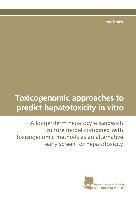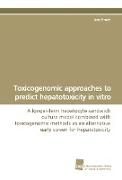- Start
- Toxicogenomic approaches to predict hepatotoxicity in vitro
Toxicogenomic approaches to predict hepatotoxicity in vitro
Angebote / Angebote:
The pharmaceutical and chemical industry is interested to replace in vivo experiments as much as possible with alternative in vitro models which have improved capability to assess and predict the safety profile of their products. This is influenced by the 3R principles of reducing, refining and replacing animal experiments (Russell & Burch, 1959). A major target in the safety testing of new chemical products is the liver. This is not surprising as the liver is the major organ for xenobiotic metabolism. Several different in vitro systems for the culture primary hepatocytes are actually used for acute toxicity-, mechanism of action-, metabolism- or enzyme induction studies. Yet, there is no established and standardized culture method maintaining hepatocyte specific functionality for longer term experiments. The author Jens Hrach elucidates advantages and disadvantages of various culture methods and gives a comprehensive overview over the actual state of the art. He describes the molecular and mechanistic characterization of a stable long term culture for hepatocytes and the subsequent use for a proof of concept toxicogenomics study.
Folgt in ca. 10 Arbeitstagen

